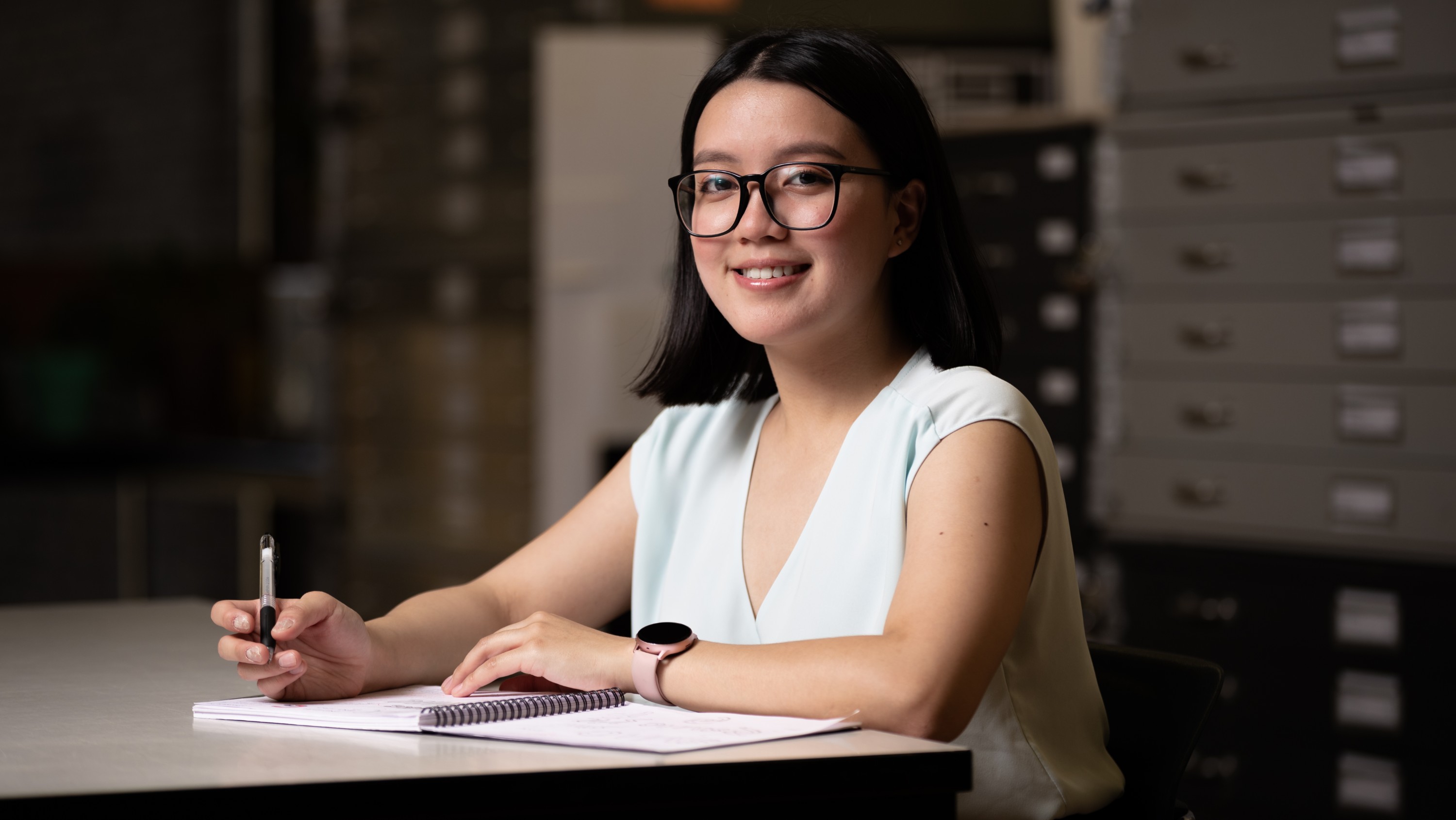Mikaela Yeo doesn’t remember much of her native language, a form of Spanish Creole called Chavacano, spoken by about 700,000 in the Philippines.
What she does remember about growing up in Zamboanga City is the artistic flair of her locally famous grandmother, Julia “Titang” Jaldon, a visual artist and one of only a few Chavacano song composers.
“Ever since I watched her paint the walls as a child I’ve been fascinated with art,” said Yeo.
That fascination with Chavacano culture was never far from her mind, even after she moved to Canada when she was 14. After high school she enrolled in the University of Alberta’s bachelor of design program and “just fell in love with the process.”
“My favorite part is the research, the planning,” said Yeo. “Most of my projects are actually focused on culture and storytelling, and I want to share my culture with the world.”
Her instructor, Sue Colberg, said Yeo “took each design project to a level of analytical thinking and creative output that regularly exceeded my expectations.”
When Colberg assigned the final degree project, to redesign a book, Yeo’s idea came almost instantly: a Chavacano dictionary. It would allow her to get reacquainted with a language she had long forgotten.
“I thought maybe I could even surprise my grandmother with it.”
The project was only meant to be theoretical, a mock exercise of sorts. When Yeo started doing the research, the only Chavacano dictionary she could find — containing a few thousand words and published in 2019 — had been compiled by Filipino doctoral candidate Gefilloyd L. De Castro of the Zamboanga State College of Marine Sciences and Technology.
“I contacted him asking if I could borrow his content to make a theoretical design project,” said Yeo. “He messaged back offering to co-author a revised edition for publication — it was just mind-boggling.”

According to Colberg, De Castro “was overwhelmed with the fact that Mikaela had made it her mission to increase the book’s accessibility, usability and appeal through design.
“It allowed her to make a profound cultural connection that she could not have anticipated at the beginning of the work.”
Yeo said she approached the dictionary as a living artifact that embodies a living culture.
“People think Chavacano is a dying language, but it’s actually a healthy language,” she said. “It’s transforming and restructuring, going through a decolonization of the language from Hispanic to Filipino.
“My grandmother would think, ‘Oh, no, the Hispanic version is dying.’ But from a linguistic point of view, it’s a natural phenomenon — things change and transform with time.”
In her cover design for the dictionary, Yeo evokes some of the physical features of Zamboanga City, as well as festivals, clothing and a vibrant, saturated colour scheme. Nearing fruition, the dictionary is now catching the attention of local publishers, she said.
“I’m hoping this can also be marketed globally online for those who want to learn the language, as well as locally.”
But the greatest satisfaction, she said, will come when she can travel to the Philippines and unveil it to her grandmother. Yeo had booked off all of summer 2020 to visit her grandmother, but the COVID-19 pandemic delayed that plan.
“She hasn’t seen this yet,” said Yeo. “Unfortunately, she now has dementia and she’s forgetting a lot of things. I thought this book could be something to preserve the memory of her beloved culture and language.”
If the dictionary design weren’t impressive enough, Yeo also managed to come up with a new visual identity for the U of A’s Sound Studies Institute when her design was selected as part of a class project.
“Everything is just falling into place, and I feel so grateful.”

Her long-term aspirations include returning to the Philippines to make connections with designers there and continuing to promote her culture.
“I’ve found real passion in design, and storytelling through different means of visual communication,” she said. “The U of A has been an excellent choice for learning how to communicate and express yourself that way.”
